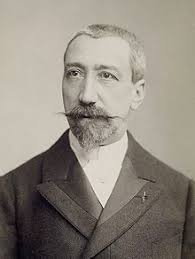What follows from the fact that the unchallenged leader of one of the USA’s two major political parties is a criminal sociopath?

This is a question that has gained even more salience in the last 24 hours:
Manhattan District Attorney Cyrus R. Vance Jr. has convened a grand jury in his wide-ranging investigation into former President Donald Trump, The Washington Post reported Tuesday, citing two sources familiar with the probe.
Prosecutors have been investigating Trump, the Trump Organization and its officers since at least 2018. The grand jury signals that they are ready to present evidence and potentially seek indictments.
The panel was convened recently, according to the Post, but it was unclear precisely when. It will meet three days a week over a span of six months.
A spokesperson for Trump did not reply to a request from CNBC for a response to the legal developments.
In New York state, this kind of special grand jury typically hears a number of different cases and is especially useful in complex, long-running matters.
Although much of Vance’s investigation is still opaque, court filings and witnesses have confirmed that prosecutors are investigating several kinds of financial activities that Trump and the Trump Organization engaged in.
One of them is whether the former president and his company falsely inflated the value of their properties for insurance adjusters and then undervalued the properties for tax purposes.
Another area under investigation is how the Trump Organization paid its top executives and whether taxes were paid on various forms of compensation.
Earlier this year, Vance and his team won a court battle over Trump’s tax returns, which they subpoenaed from the firm that prepared them.
That Trump has been spitting in the face of both the civil and criminal law for his entire adult life is not exactly breaking news. By contrast, that he may suffer legal consequences for this beyond an intermittent bankruptcy and an occasional civil settlement in the wake of his compulsive thievery would be a surprising but not completely impossible development.
When praising the American legal system, elite legal actors have traditionally claimed that equality before the law is one of its prime glories. This is of course not true. It is not, however, completely false either:
In particular, it’s just possible — although I would venture to wager still highly unlikely — that the former guy (an excellent moniker, by the way, which should be generally adopted) will become, precisely because of his fame and infamy, the object of one of those classic exemplary punishments that our legal system emits from time to time, to illustrate that All Men Are Equal Before the Majestic Equality of the Law.
My favorite historical example of this genre of Anglo-American jurisprudence is the fate Laurence Shirley, 4th Earl Ferrers. The Earl, who was evidently a mentally unstable alcoholic, even by the standards of the 18th century English gentry (which is saying something), murdered his steward in a rage. He was tried by a jury of his literal peers, and sentenced to hang:
On 5 May 1760, aged 39, dressed in a light-coloured suit embroidered with silver (the outfit he had worn at his wedding), he was taken in his own carriage from the Tower of London to Tyburn and there hanged by Thomas Turlis. There are several illustrations of the hanging. It has been said that as a concession to his rank the rope used was of silk.[ After the execution his body was taken to Surgeon’s Hall for public exhibition and dissection. The execution was widely publicised in popular culture as evidence of equality of the law and the story of a wicked nobleman who was executed “like a common criminal” was told well into the 19th century.
Douglas Hay’s mordantly amusing essay “Property, Authority, and the Criminal Law,” recounts just how widely the Earl’s execution was publicized for many decades afterwards, in popular pamphlets and the like.
Hay demonstrates how this extraordinary event was for generations cited over and over again by the English legal system’s propagandists, as definitive proof of the immeasurable superiority of British justice to the tyrannical and arbitrary inquisitorial system to which the unfortunate French populace was subjected.
A very rough contemporary equivalent in the American context might be the imprisonment of no less a personage than Martha Stewart for five months in a federal prison, followed by two years of supervised mansion arrest, for the crime of lying to federal investigators about a stock trade in regard to which she apparently used inside information to avoid a loss of what would be the equivalent of about seventeen cents to an average person, but I guess that’s how you get to be Martha Stewart et. al. in our meritocratic plutocracy. (Until I looked the details up I had forgotten that Trump pardoned Stewart, which rounds out this whole edifying narrative nicely.)
In any event, the larger story here of course is that Donald Trump — one of the most flagrant scofflaws of our or any other time — is still the undisputed leader of the Republican party, and the odds-on favorite to be the party’s presidential nominee three years from now, despite or perhaps because of these legal complications.
I’m not looking forward to the slew of centrist brow-furrowing about how we can’t put Trump in prison, given the views of the common clay of the Midwest sitting in this Dayton diner, who believe that prosecuting the man they continue to worship is a deep state plot, rather than a very occasional application of our criminal laws to a person of high social status.


